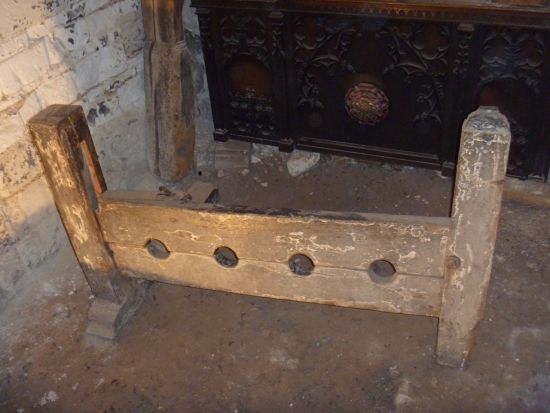
Mark Branch Photo
Just in time for our visit, Windsor Castle opened the top of its Round Tower to tourists. We had to promise not to take pictures of the Queen’s apartment.
The choir of St. Thomas’s Episcopal Church in New Haven is in England until Aug. 22, singing for church services at Westminster Abbey, Windsor Castle, and Gloucester Cathedral. Mark Branch is keeping a journal of the trip for the Independent.
The morning after we sang three services at Westminster Abbey, we took a short train ride out of London to sing Evensong at St. George’s Chapel, which is within the confines of Windsor Castle, the home of English monarchs since the Norman Conquest. Evensong, as you might imagine, doesn’t happen until the end of the day, but we left bright and early to tour the castle. Many of us climbed the 200 steps to the top of the Round Tower, the piece of the castle that dominates the skyline and dates back to William the Conqueror. We also toured the State Apartments where the Queen entertains visitors and wandered the historic precincts of this thousand-year-old citadel.
As for where we would be singing, St. George’s is neither a parish church nor a cathedral but — like Westminster Abbey — something called a “Royal Peculiar,” a church that answers directly to the King or Queen. St. George’s is the chapel of the Order of the Garter, the most prestigious honorary order of knights in Great Britain.

From the Round Tower, that’s St. George’s Chapel, where we sang Evensong, between the crenellations.
St. George’s is a Gothic church dating back to the 14th century. It’s much smaller and more spare than Westminster Abbey, but it has its share of flourishes. The choir seats double as places for the Order of the Garter to sit when they have an annual ceremony in the chapel, and each of the back row of seats was covered with plaques representing the knights. On the wall above our heads were crowns decorated with heraldic representations of each knight: a bright red stag, a swan, and many others. The authorities were very clear that we were not to take pictures inside the chapel, but you can see interactive 360-degree views on the chapel’s website.

Our rehearsal space was an honest-to-goodness 14th-century dungeon.
Our rehearsal room at Windsor was at the bottom of a 13th-century building called the Curfew Tower. The room is called the Dungeon, and it’s no joke. Edward III used that very space as a prison. (We didn’t find out whether the set of stocks in one corner was left over from those days or just for show.) Edward is said to have the bodies of murdered prisoners hung from the side of the tower as a sort of deterrent; with that in mind, we decided not to test the rule about picture-taking in the chapel.
As at Westminster Abbey, a verger explained to us ahead of time how the procession would work. Our verger at St. George’s told us that before the procession begins, the canon says “Toll Down!” — a signal for the church’s bells to cease. “Never mind that we haven’t got any bells,” she said, “we’ve been saying it for 400 years.”

The dungeon even had a set of stocks, which our director thankfully did not put to use during rehearsal.
Although Windsor Castle is an enormous tourist attraction, Evensong is by no means a big draw. So while the day before we had sung for hundreds of people, there were barely two dozen at St. George’s besides us, many of whom were our family and friends. Not that it mattered, though; singing in those acoustics and surroundings, and amid all that history, was a heady experience all the same.
In the middle of the floor of the choir area is a monument to Henry VIII and Charles I, both of whom are buried just below that spot. Knowing about New Haven’s connection to Charles I, I had to smile when we walked over his tomb. It was Charles who was beheaded during the English Civil War on the authority of several judges who signed a death warrant for him. After the Restoration, three of the judges (Dixwell, Goffe, and Whalley) fled to New Haven to escape retribution by Charles II over what they had done to his father, and the Puritans here were happy to help hide them. So I wouldn’t have been surprised to hear a spinning noise coming from Charles’s tomb when a choir from New Haven started singing over his body.
Previous installments:
• Evensong At Westminster Abbey
• A Connecticut Choir In Elizabeth’s Court